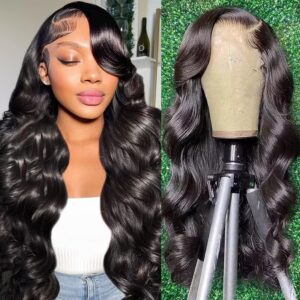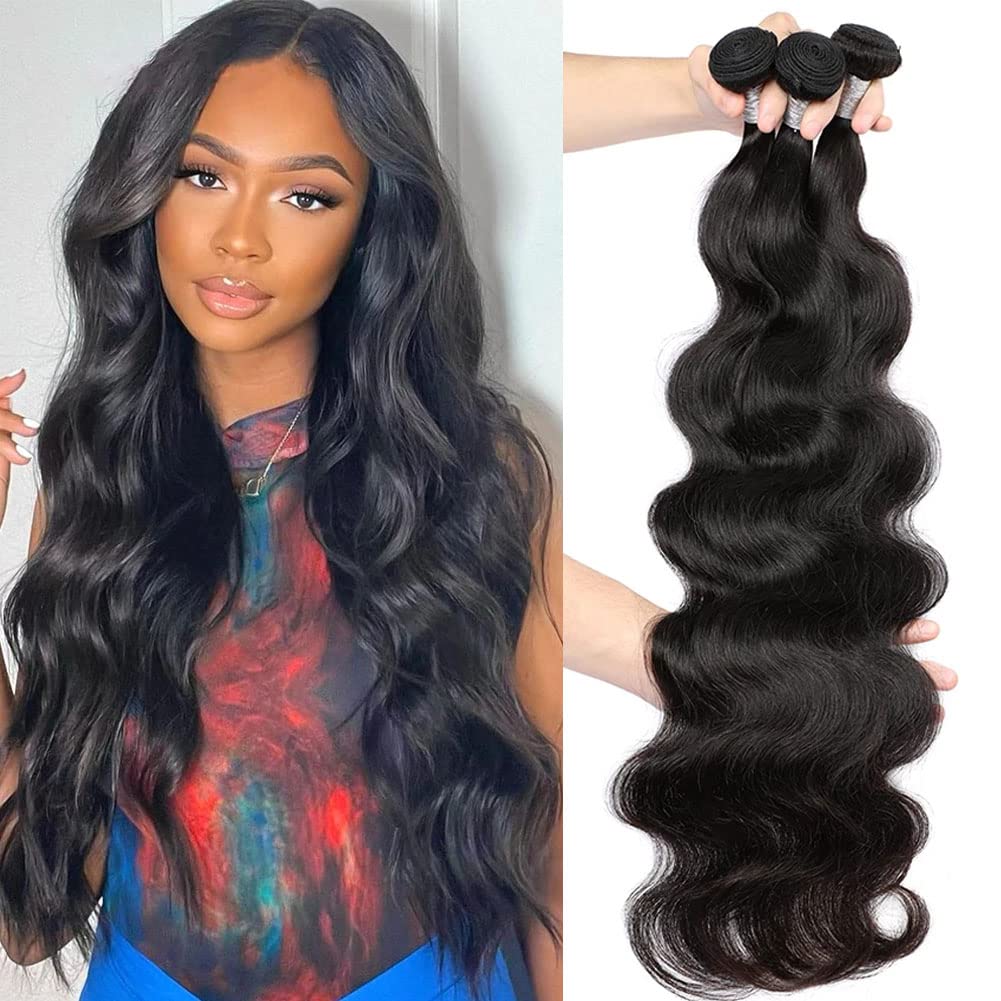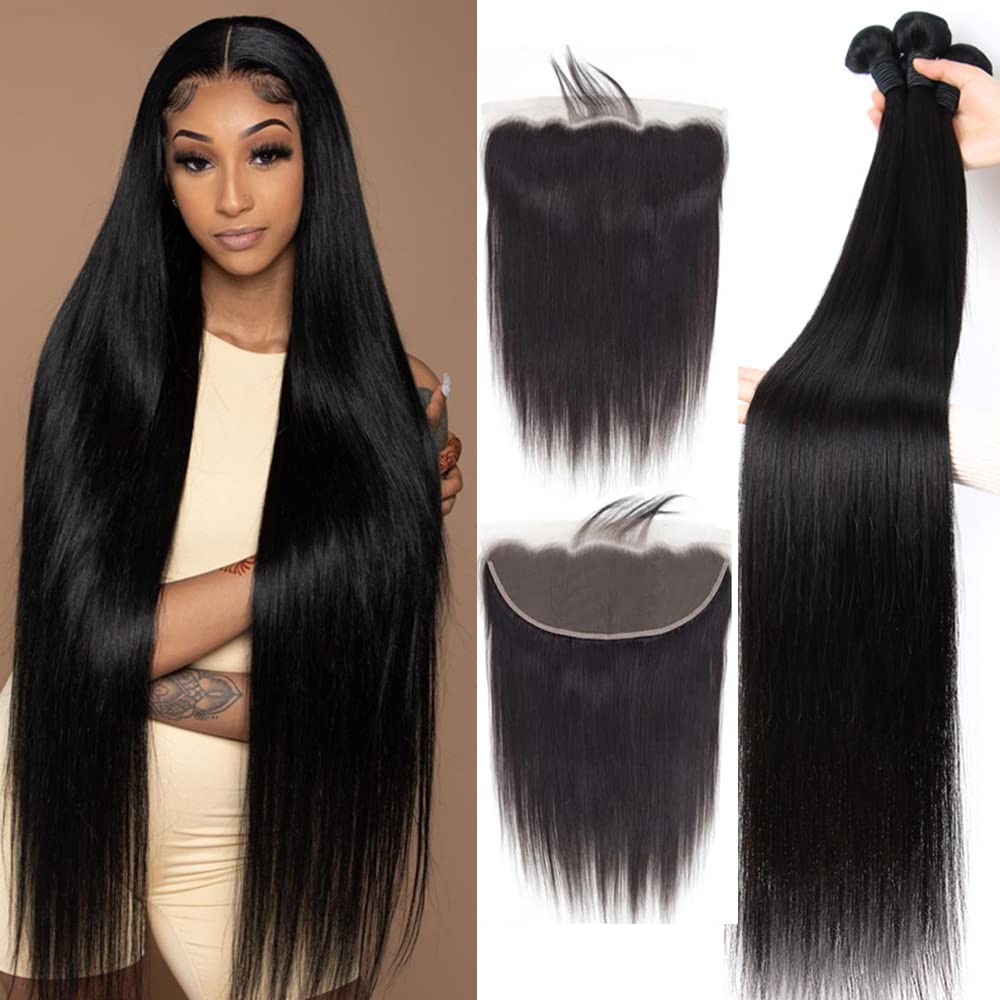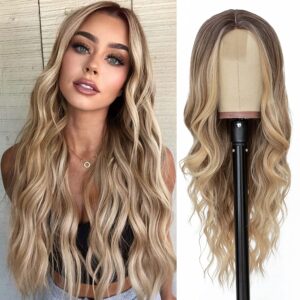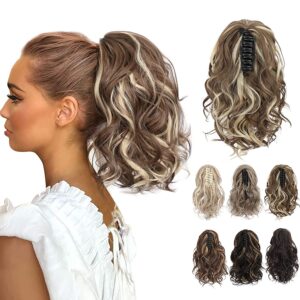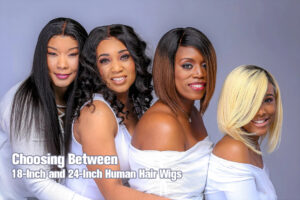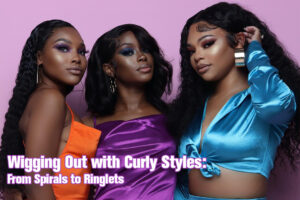The quality of a wig greatly depends on the condition and health of the hair used. A well-made natural hair wig should have healthy hair that is properly knotted to create natural movement and direction, giving the appearance of a full head of hair. The type of hair used in wig production is a crucial factor in determining the quality, with wigs that preserve more characteristics of natural hair being preferred. While there are various options of natural and synthetic wigs available, even among natural hair wigs, there is a range in terms of quality.
Human Hair
Wigs made from human hair are considered to be the most natural-looking and versatile option. They are typically made from real human hair, sourced from donors or through hair donations. Human hair wigs can be styled and dyed just like natural hair, offering a high level of customization.
The cuticle, which is the visible and touchable part of the hair, plays a crucial role in determining its health. The cuticle consists of overlapping flat cells that point in the same direction, giving the hair its shine and allowing it to slide smoothly without tangling. When the cuticle is intact and healthy, the hair appears soft, shiny, and elastic. However, chemical treatments, excessive heat, and strong products can damage the cuticle, resulting in dull, tired, dehydrated, and less elastic hair. The health of the cuticle is essential not just for our natural hair but also for the hair used in wig production. It is important to choose wigs that use hair with an intact cuticle, especially for longer wig styles. Most hair used in wig production is sourced from Indian and Oriental origins, where the dark hair undergoes depigmentation and coloring. To create a natural-looking wig, it is crucial to use natural, healthy, virgin hair that has not undergone any chemical treatments. Neglecting these guidelines risks further damaging the hair from the start.
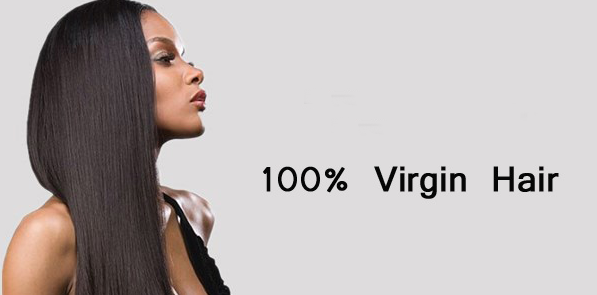
Virgin Hair
Vigin hair collected directly from a single donor and retains its original color, texture, and cuticle alignment. It has not been chemically processed or treated with any dyes, perms, or other alterations. It is hair that is in its natural state, free from any damage or chemical treatments, and has never been subjected to heat styling tools.
Remy Hair
Remy hair is collected and processed in a way that preserves the cuticle alignment. The cuticles of the hair strands all face the same direction, resulting in a smoother and more natural appearance. Remy hair is often considered high-quality and tangle-free.
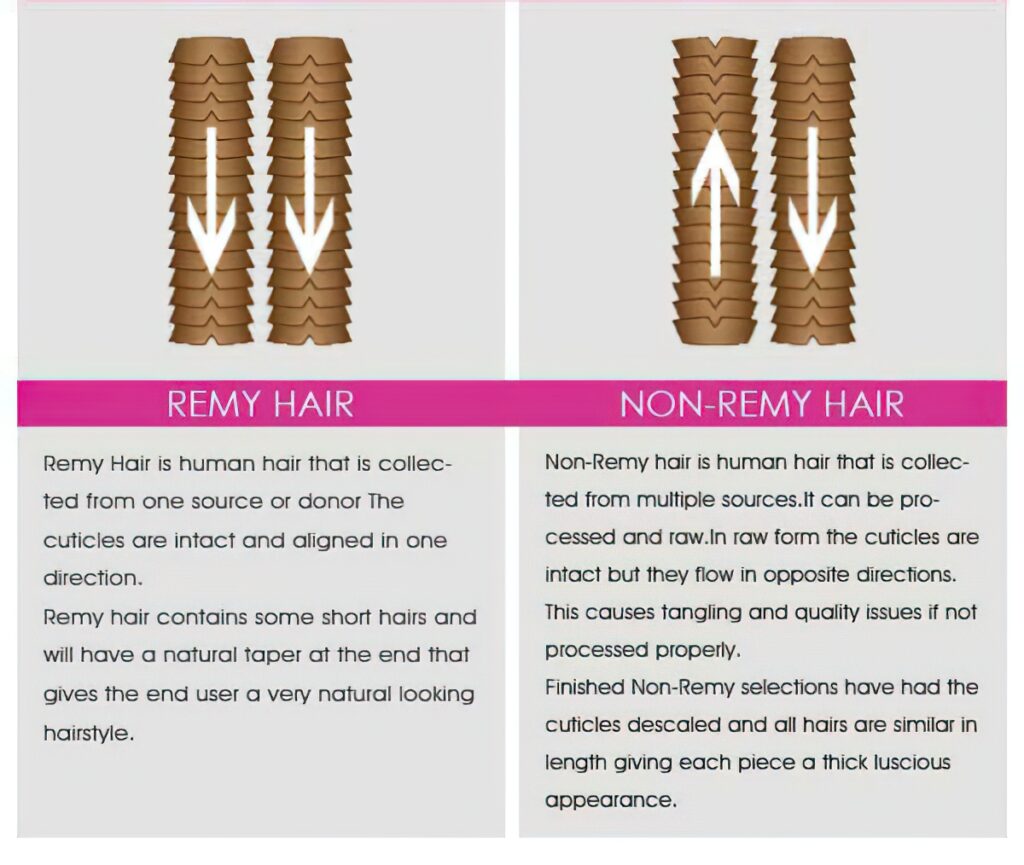
Non-Remy Hair
Non-Remy is collected from various sources without maintaining the natural alignment of the hair cuticles. The cuticles can be mixed in different directions, leading to tangling and matting issues. Non-Remy hair is typically chemically treated to remove the cuticle layer and make it more manageable for use in wigs or extensions. It is generally considered to be of lower quality compared to Remy hair.
Processed Hair
Processed hair has undergone chemical treatments or alterations. This can include dyeing, perming, relaxing, or any other chemical processes to change the color, texture, or style of the hair. Processed hair may require different care and maintenance compared to unprocessed hair.
Compare Virgin Hair, Remy Hair, Non-remy Hair
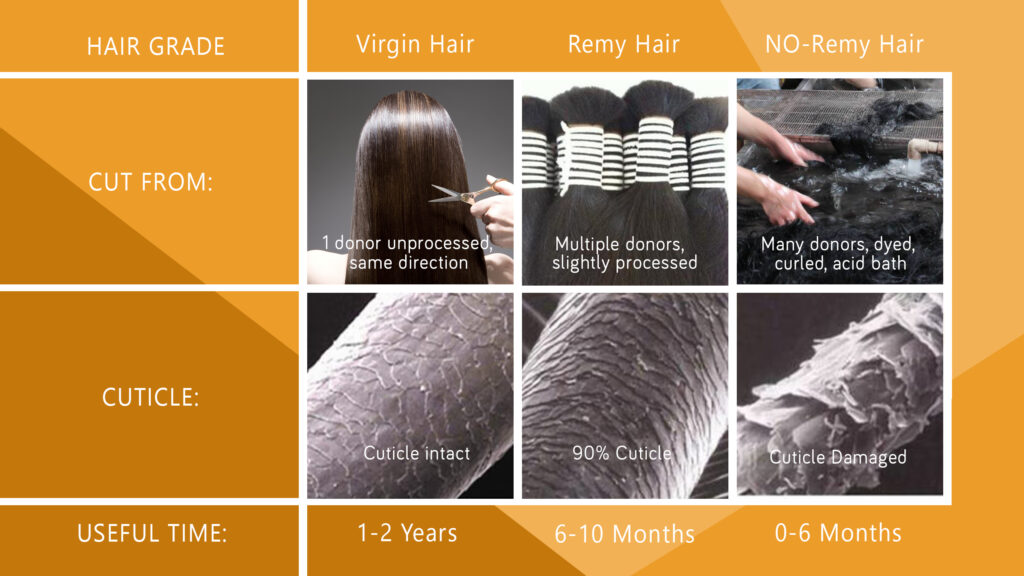
Synthetic Hair
Synthetic hair wigs are made from artificial fibers designed to mimic the appearance and texture of natural hair. These wigs are pre-styled and retain their shape well. Synthetic wigs are often more affordable than human hair wigs and require less maintenance, as they do not need to be restyled after washing.
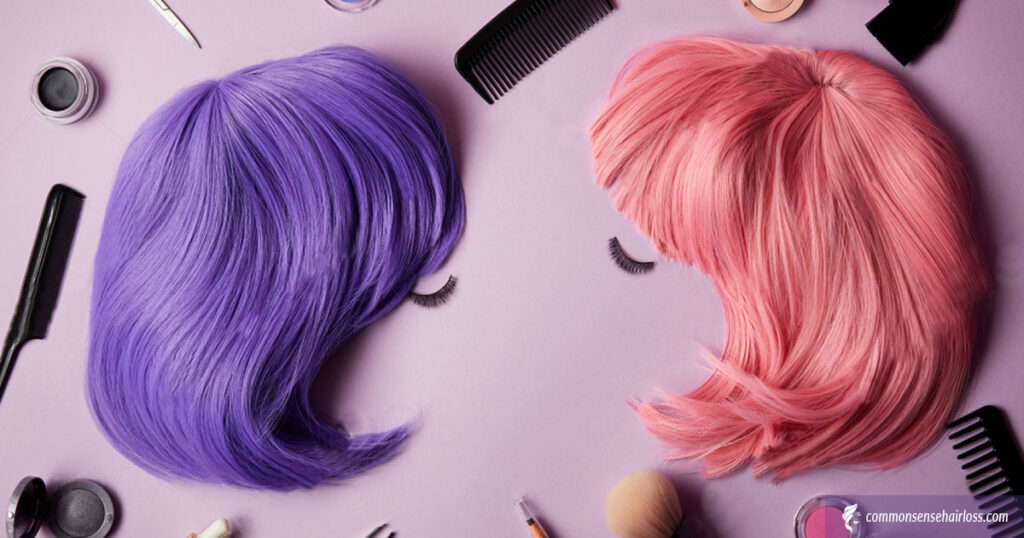
Traditional Synthetic Hair
This type of synthetic hair is made from synthetic fibers, typically made of a high-quality plastic called Kanekalon or Toyokalon. Traditional synthetic hair is pre-styled and retains its shape even after washing. It is more affordable compared to human hair and is available in a wide range of colors, textures, and styles.
Heat-Resistant Synthetic Hair
Heat-resistant synthetic hair, also known as heat-friendly or heat-defiant synthetic hair, is made from advanced synthetic fibers that can withstand heat styling tools such as curling irons and straighteners. This type of synthetic hair allows for more versatility and versatility in styling, as the hair can be straightened, curled, and restyled. Heat-resistant synthetic hair is generally more expensive than traditional synthetic hair but offers more options for styling.
Blended Hair
Some wigs are made from a blend of human hair, synthetic fibers and animal hair, combining the natural look and feel of human hair with the lower cost and easy maintenance of synthetic hair. These blended hair wigs offer a good balance of realism and affordability.
Human Hair VS Synthetic Fibers
People consider the material of a wig for a variety of reasons, as it plays a significant role in determining the overall look, feel, versatility, durability, and maintenance requirements of the wig. Here are some further explanations for why people consider the material of a wig:

Why Source Material Important For A Wig
Natural Appearance
One of the primary reasons people consider the material of a wig is to achieve a natural and realistic appearance. Many individuals wear wigs to enhance their natural hair or to completely change their hairstyle. Human hair wigs closely mimic the look and feel of natural hair, providing a more authentic and seamless look. The texture, shine, and movement of human hair contribute to its natural appearance, making it a preferred choice for those seeking a realistic wig.

Styling Options
The material of a wig directly impacts its styling versatility. Human hair wigs can be styled and treated just like natural hair, offering a wide range of styling possibilities. They can be straightened, curled, colored, and even heat-styled without causing damage. This flexibility allows individuals to achieve different looks and experiment with various hairstyles. Synthetic wigs, while having pre-set styles, may have limitations in terms of restyling options. However, some synthetic wigs are heat-resistant and offer more styling options compared to traditional synthetic wigs.
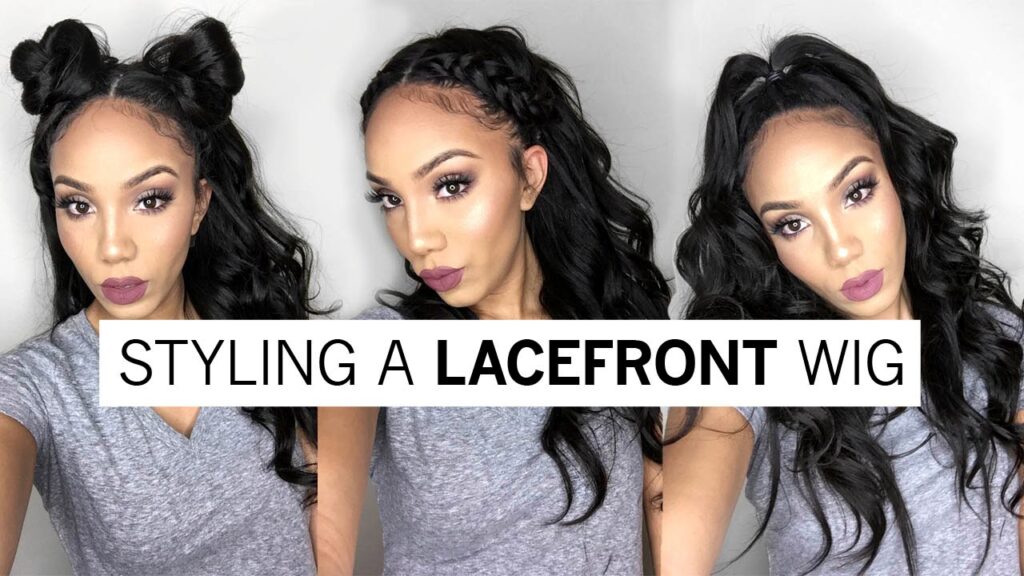
Durability and Longevity
The material of a wig affects its durability and lifespan. Human hair wigs, when properly cared for, tend to be more durable and can last for a longer time. They can withstand regular washing, styling, and heat treatments without significant damage. Synthetic wigs, although improving in quality, may have a shorter lifespan due to the synthetic fibers being prone to tangling, frizzing, and losing their shape over time. However, high-quality synthetic wigs made from advanced fibers can be more durable and retain their shape and style for a longer period.

Comfort and Breathability
Comfort is an essential consideration when choosing a wig. The material of the wig can affect how comfortable it feels on the scalp. Human hair wigs are often considered more breathable and comfortable due to their natural properties. They allow airflow, reducing scalp irritation and providing a more comfortable wearing experience. Synthetic wigs can sometimes feel heavier and less breathable, although advancements in synthetic hair technology have led to the development of lighter and more breathable synthetic fibers.
Maintenance and Care
The material of the wig also influences the maintenance and care required. Human hair wigs typically require more care and attention, similar to natural hair, including regular washing, conditioning, and styling. They may also need periodic treatments to maintain their softness and shine. Synthetic wigs, on the other hand, are generally easier to maintain as they retain their style after washing and require less styling effort. They often only need to be washed with specialized wig shampoos and spritzed with wig-friendly products.
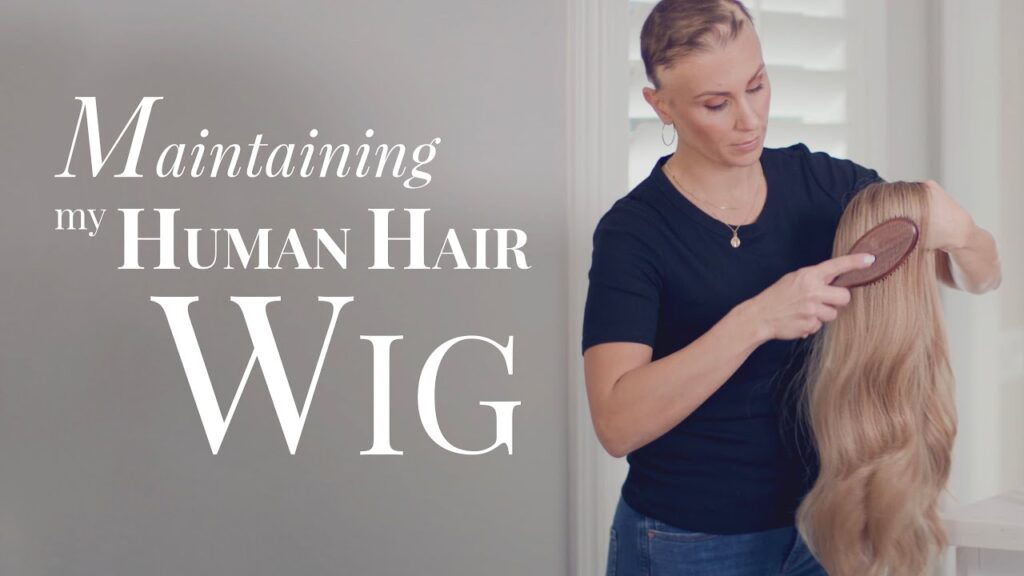
How Many Main Different Hair Source Around The World
Asian Hair
Asian hair is typically straight and thick, with a round cross-sectional shape. It tends to be resilient and less prone to damage. Asian hair is often characterized by its ability to hold styles well and its natural shine. However, there can be variations in texture and thickness among individuals of Asian descent.
Caucasian Hair
Caucasian hair is diverse and can range from straight to wavy or curly. It is often finer in diameter compared to other hair types. Caucasian hair can be more prone to damage, such as breakage or frizz, and may require more frequent washing and styling.
African American Hair
African American hair is diverse and can vary from tightly coiled to wavy or straight. It typically has a more elliptical or flat cross-sectional shape and is often characterized by its density and texture. African American hair may require specialized care, such as moisturizing and protective styling, to maintain its health and manageability.

Indian Hair
Indian hair is highly sought after in the hair industry due to its desirable qualities. It is known for being thick, lustrous, and versatile in terms of styling. Indian hair is often favored for its natural texture, which ranges from straight to wavy or curly. It is also known for its ability to blend well with a variety of hair types and ethnicities. Indian hair is commonly used in the production of wigs, extensions, and weaves, as it provides a natural and seamless look when properly processed and treated.
Brazilian Hair
Brazilian hair is sourced from individuals of Brazilian descent. It is highly regarded in the hair industry for its quality and versatility. Brazilian hair is known for its thickness, strength, and natural shine. It is often sought after for its softness and ability to hold various hairstyles, whether straightened, curled, or waved. Brazilian hair is also known for its durability, allowing for longer-lasting extensions or wigs. It is commonly used in the production of high-quality hair products, providing a natural and luxurious look. Just like with any human hair type, proper care and maintenance are important to ensure the longevity and health of Brazilian hair extensions or wigs.
Human Hair Wig Manufacturing Location
There is no single country that exclusively provides hair for wigs, as the hair industry is global and diverse. However, some countries are known for being major suppliers of human hair for wig production. These countries include China, India, Brazil, and various countries in Eastern Europe.
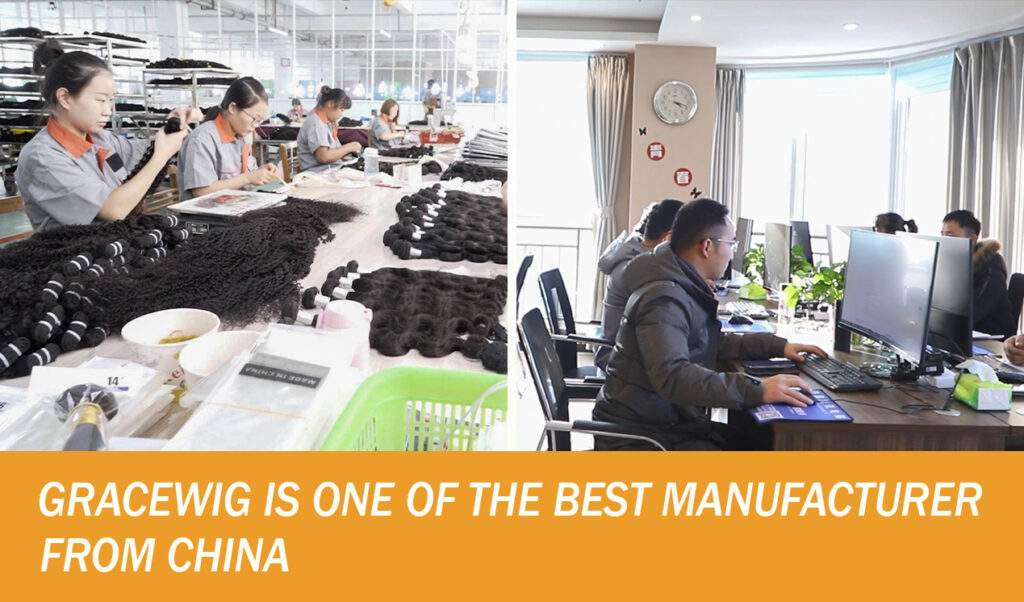
China is a significant supplier of human hair, particularly for synthetic wigs. The country has a well-established manufacturing industry and produces a wide range of wigs, including both human hair and synthetic hair options. China is one of the largest manufacturers of human hair wigs.
Indian hair is highly regarded for its quality and is commonly used in the production of wigs and extensions. Indian women often donate their hair as part of religious practices, making it a valuable source for the hair industry.
Brazilian hair is also popular due to its thickness, strength, and natural shine. It is known for its versatility and ability to blend well with various hair types.
Eastern European countries, such as Russia and Ukraine, are known for providing high-quality human hair for wigs. The hair sourced from these regions is often sought after for its fine texture and natural appearance.

